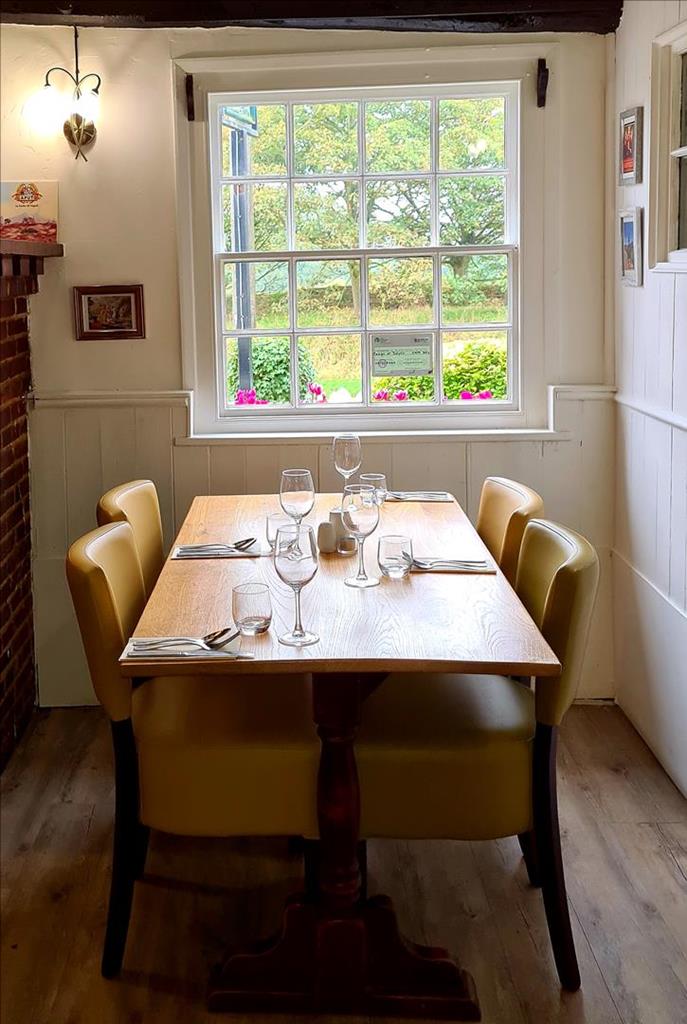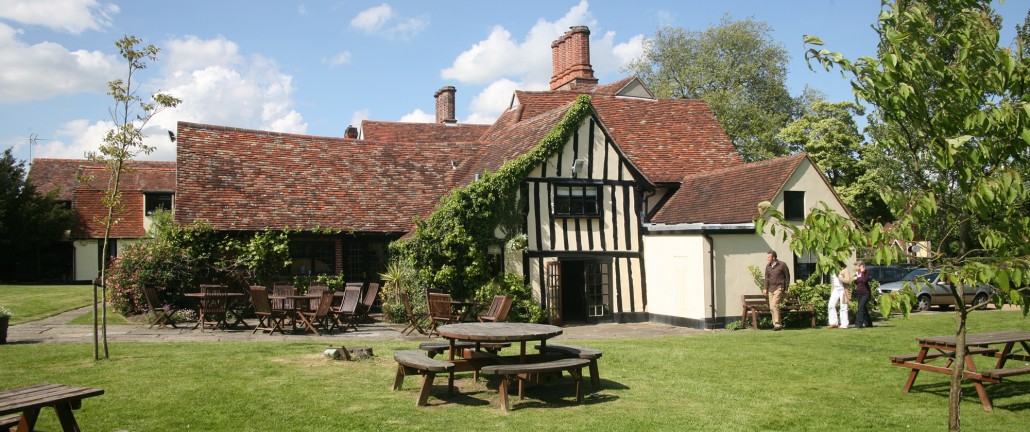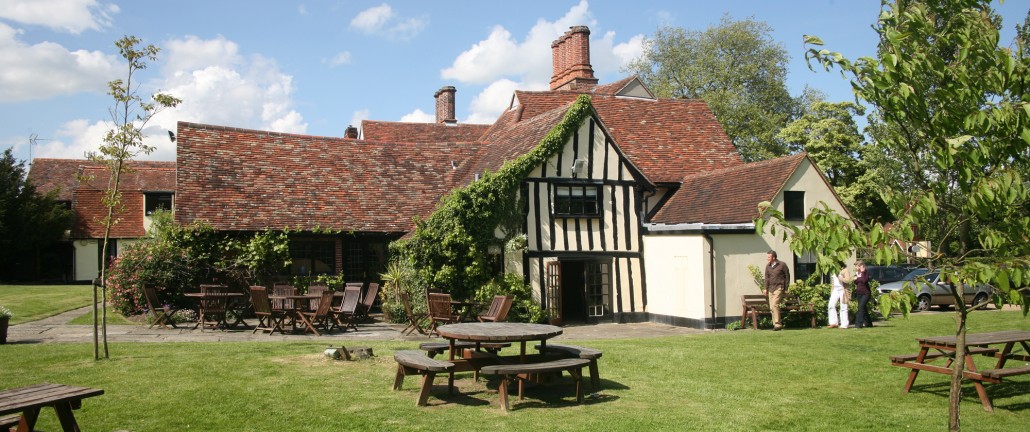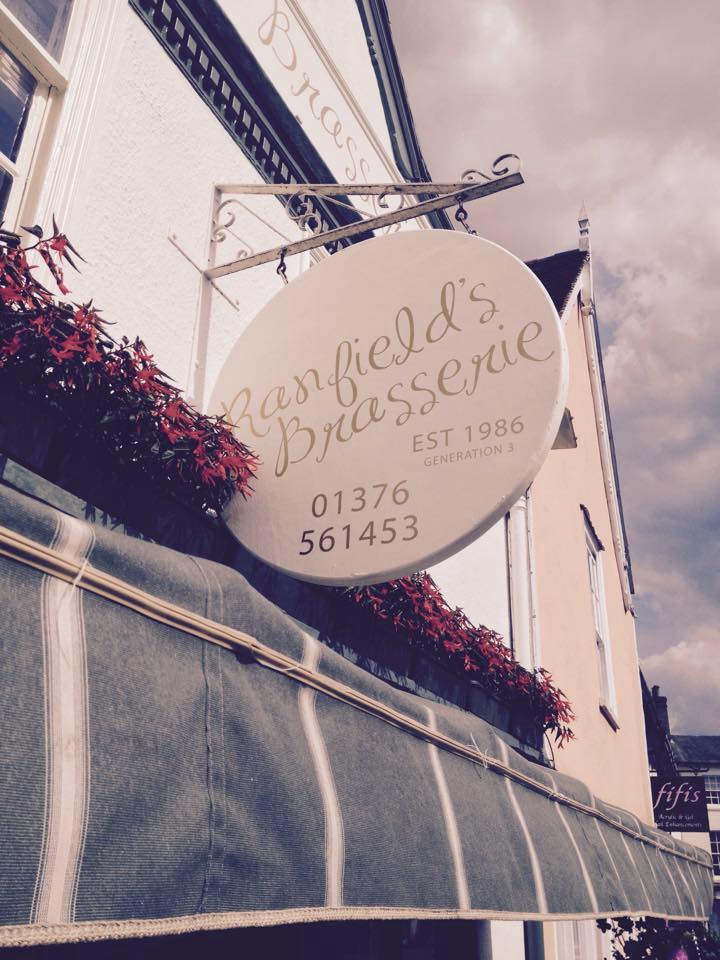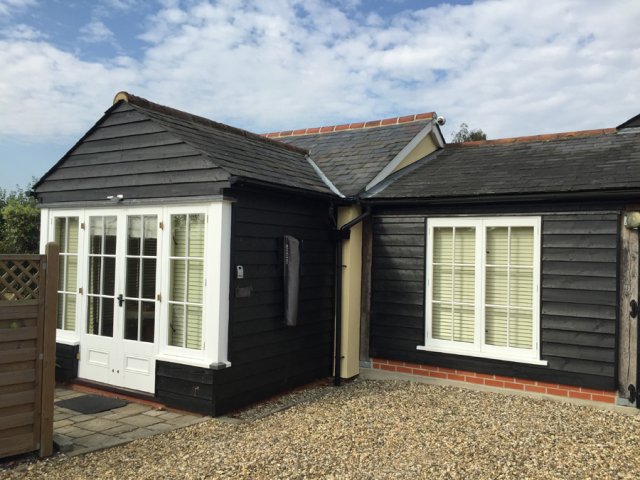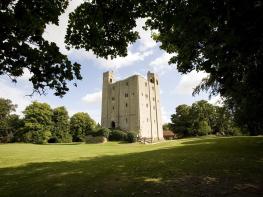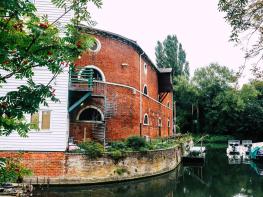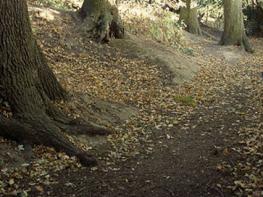The Retreat is a superbly appointed self catering facility comprising of The Barn and The Lodge…
A short loop at Halstead

A charming town and country walk discovering the legacy of the Courtauld family
2 miles (3.2kms)
About the walk
Surrounded by the gentle rolling countryside of the Colne Valley in north Essex, Halstead developed over many centuries as a busy market town, and in the Middle Ages much of its prosperity came from the wool trade. In the early 19th century Samuel Courtauld (1793–1881), an industrious and successful businessman, brought a new lease of life to the town. A descendant of a Huguenot refugee family, he set up in business as a silk throwster (a person who twists silk fibres into thread), and his family went on to found the internationally known Courtaulds company.
A royal trendsetter
Courtaulds had its share of ups and downs, but always seemed one step ahead of its competitors, due to a policy of diversification. When the silk industry dwindled, mainly due to French competition, the company specialised in the production of mourning crêpe, which was to become the definitive fashion material during Queen Victoria's reign (1837–1901) and for long after. When crêpe fell out of favour, Courtaulds turned to the manufacture of artificial silk. This was so successful that brand name materials such as Celanese saw the company through the depression of the 1930s.
The Courtaulds connection with Halstead began in 1825, when Samuel Courtauld bought the present Townsford Mill and converted it to produce silk-woven fabrics; much of the raw material was imported in bulk from India. In those days the cloth was produced in the workers' homes, and some of these early weavers' cottages can still be seen next to the mill in Bridge Street. By 1891 the mill had become one of England's largest employers, where 1,400 people – the vast majority young girls and women – toiled at 1,000 looms.
The Courtauld family left legacies throughout Halstead and on this walk you will discover some of them. They inlcude the Jubilee Fountain at the top of Market Street, on a spot previously occupied by the old Market Cross. In Hedingham Lane you can see the Courtaulds workers' houses, which are named after characters and titles from Jane Austen's novels. The family also footed the bill for building Halstead Cottage Hospital, while the Homes of Rest next door, a semi-circular row of single-storey dwellings built in 1923, provided much-needed housing for retired silk weavers.
The Courtauld Institute
Samuel Courtauld became very rich, and lived to the ripe old age of 88 in an impressive Tudor mansion called Gosfield Hall, a few miles from Halstead. During the 1920s his great-nephew and namesake would often drive or walk along Box Mill, where he apparently took a dislike to the housing and duly replaced them with his own preferred style of cottages. The young Samuel went on to establish the Courtauld Institute of Art in London before he died in 1947. In 1982 Courtauld's factory finally closed down, but there's little doubt that this name lives on in Halstead.
Walk directions
Turn right into Chapel Street, then left into the High Street by the former post office. Walk up Market Hill to the Jubilee Drinking Fountain for panoramic views of the layout of the town, and note the undulating landscape – proof that not all of Essex is flat.
Turn left into Hedingham Road (A1124), passing Halstead Hospital and the Courtauld Homes of Rest on your right. Turn left into Box Mill Lane, where several cottages and larger dwellings attest to further building by the Courtaulds.
At the end of Box Mill Lane, maintain direction into Box Mill Meadow, a fine picnic spot, and cross the footbridge over the River Colne as it flows south into the town. Two mills – a watermill and a wind-powered one – once occupied this spot. Take the footpath to the left, which later veers away from the river.
At the edge of Halstead Town Football Ground, cross the stile and maintain your direction along the footpath, which becomes a grassy track, the former route of the Halstead and Colne Valley Railway. Go straight ahead into Butler Road, which was named after R A Butler (1902–82), better known as Rab, Conservative politician and Member of Parliament for Saffron Walden. At the T-junction with Trinity Street notice the redevelopment across the road, where flats and a park area behind them now stand on the site of the old railway station.
Turn right, past an alley called Rail Yard, and walk to Holy Trinity Church on your right. Close by are some of the oldest houses in the town. Retrace your steps for a few paces and turn right just after the police station into New Street. Note the public gardens opposite the Methodist church, and turn left into Martins Road, then left again and right into Factory Lane West.
Continue ahead and turn left into The Causeway. Courtauld's old Townsford Mill is on the right, and walk ahead into Bridge Street. To the left is Halstead Library, built in 1865. Turn right to cross the bridge over the River Colne and go into the High Street to the former post office. Pause here to note the varied architecture around you. Walk along Chapel Street and return to the car park.
Additional information
Town streets and grassy tracks
Urban, river and meadow
Pleasant on-lead town walk, but most dogs will prefer the meadow
OS Explorer 195 Braintree & Saffron Walden
Pay-and-display in Chapel Street
Chapel Street
WALKING IN SAFETY
Read our tips to look after yourself and the environment when following this walk.
Find out more
Also in the area
About the area
Discover Essex
Essex is full of pleasant surprises. It has the largest coastline of any county in England, with its fair share of castles, royal connections and scenic valleys. Take Colchester, for example, which was built by the Romans and is Britain’s oldest recorded town. Its castle contains the country’s largest Norman keep and yet, a stone’s throw from here, East Anglia’s newest arts centre promises to put Colchester firmly on the map as Essex’s capital of culture.
Tidal estuaries are plentiful and their mudflats offer migrating birds a winter feeding place. Essex was known as the land of the East Saxons and for centuries people from all over Europe settled here, each wave leaving its own distinctive cultural and social mark on the landscape. Walking a little off the beaten track will lead you to the rural retreats of deepest Essex, while all over the county there are ancient monuments to explore:
- the great Waltham Abbey
- Greensted, thought to be the oldest wooden church in the world
- the delightful village of Pleshey has one of the finest examples of a former motte-and-bailey castle
- Hedingham Castle, magnificently preserved and dating from the 11th century.
Nearby stays
Restaurants and Pubs
Nearby experiences
Recommended things to do
Why choose Rated Trips?
Your trusted guide to rated places across the UK
The best coverage
Discover more than 15,000 professionally rated places to stay, eat and visit from across the UK and Ireland.
Quality assured
Choose a place to stay safe in the knowledge that it has been expertly assessed by trained assessors.
Plan your next trip
Search by location or the type of place you're visiting to find your next ideal holiday experience.
Travel inspiration
Read our articles, city guides and recommended things to do for inspiration. We're here to help you explore the UK.






